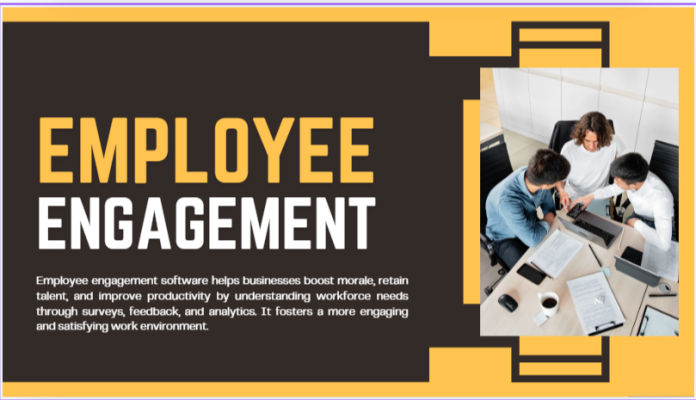Employee engagement software is a specialized tool designed to foster a more engaging, productive, and satisfying work environment. These platforms are becoming essential for modern businesses that aim to retain top talent, boost morale, and enhance overall productivity. Simply put, employee engagement software helps companies understand the needs and sentiments of their workforce through surveys, feedback mechanisms, and performance analytics.
Boosting Employee Satisfaction with Engagement Software

Employee engagement software enhances satisfaction by providing tools for real-time feedback, recognition, and performance reviews, ensuring employees feel valued. This proactive approach fosters a positive workplace culture, driving productivity and loyalty.
-
Employee Engagement Necessity:
In a competitive business landscape, keeping employees motivated and satisfied is not just a good practice—it’s a necessity. Disengaged employees can become a significant liability, leading to lower productivity, increased turnover, and even a negative impact on company culture.
-
Role of Engagement Software:
Employee engagement software provides a streamlined way to measure engagement levels, identify areas for improvement, and implement actionable strategies to address those challenges.
-
Key Features:
At its core, good employee engagement software offers tools for real-time feedback, performance reviews, and peer recognition. These features ensure that employees feel heard and valued, which can significantly contribute to job satisfaction and loyalty.
-
Data-Driven Decisions:
Moreover, the data provided by such software allows management to make informed decisions, driving changes that resonate with the workforce.
-
Personalization and Inclusivity:
Using these platforms, companies can also personalize their approach to employee well-being, offering customized benefits and recognition programs. This personalization can lead to a more inclusive and supportive work environment. Whether your business is a small startup or a large corporation, investing in a robust employee engagement software can provide the insights needed to build a happier, more committed team.
Key Benefits of Using Employee Engagement Software
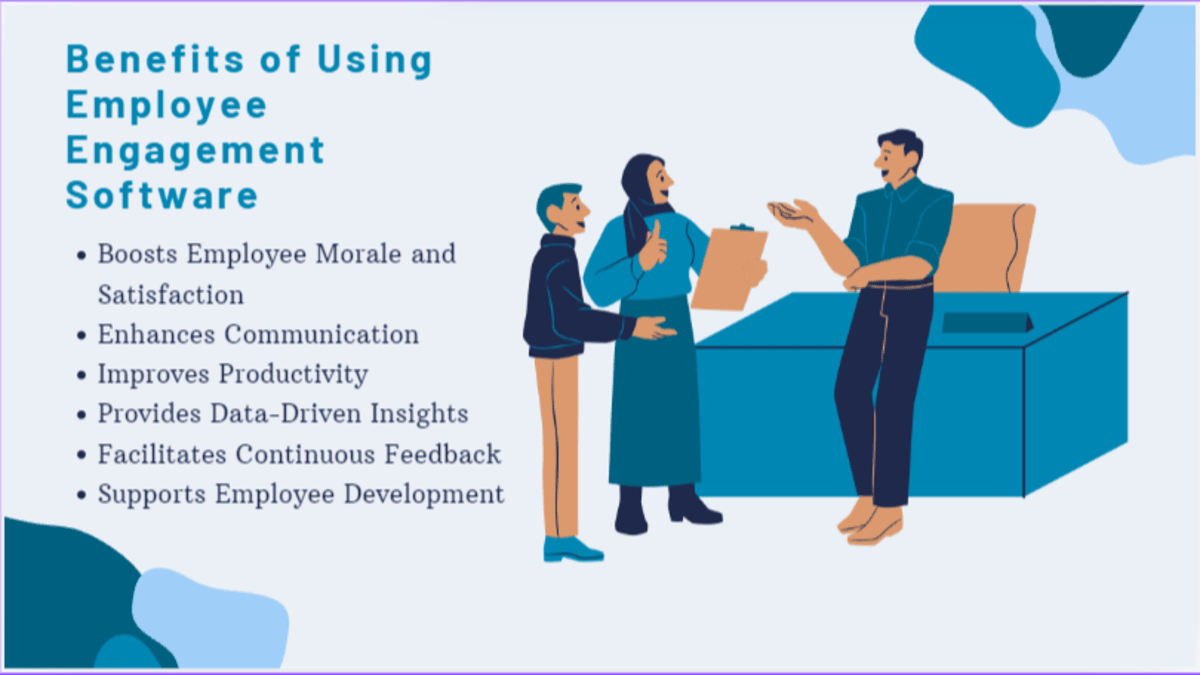
Investing in employee engagement software offers a multitude of advantages that can significantly enhance workplace culture and productivity. Here are some key benefits to consider:
-
Boosts Employee Morale and Satisfaction:
Employee engagement software provides platforms for recognizing achievements, sharing positive feedback, and creating a more inclusive environment. This reinforcement boosts morale, increasing overall job satisfaction and reducing turnover rates.
-
Enhances Communication:
Effective communication is vital for any successful business. Employee engagement tools often include chat functions, survey capabilities, and feedback channels that facilitate transparent communication across all levels of the organization. This ensures employees feel heard and valued, fostering a collaborative atmosphere.
-
Improves Productivity:
When employees are engaged and satisfied, they are more likely to be productive. Features such as goal-setting, task tracking, and performance metrics allow employees to stay focused and aligned with the company’s objectives. This targeted approach can lead to a more efficient and productive workforce.
-
Provides Data-Driven Insights:
Understanding how engaged your employees are can be difficult without quantitative data. Employee engagement software often includes analytics and reporting features that offer valuable insights into trends, strengths, and areas for improvement. This data helps management make informed decisions to uplift the entire organization.
-
Facilitates Continuous Feedback:
Regular feedback is crucial for growth and improvement. Employee engagement software enables continuous feedback loops through pulse surveys, one-on-one meetings, and peer reviews. This consistent feedback helps in timely interventions, ensuring that issues are addressed before they escalate.
-
Supports Employee Development:
Many engagement tools include features such as training modules, skill assessments, and career development plans. These resources support ongoing employee growth, making them feel invested in and boosting their long-term commitment to the company.
Overall, using employee engagement software can lead to a more motivated, productive, and harmonious workplace, making it a worthwhile investment for any organization looking to thrive.
Essential Features to Look For
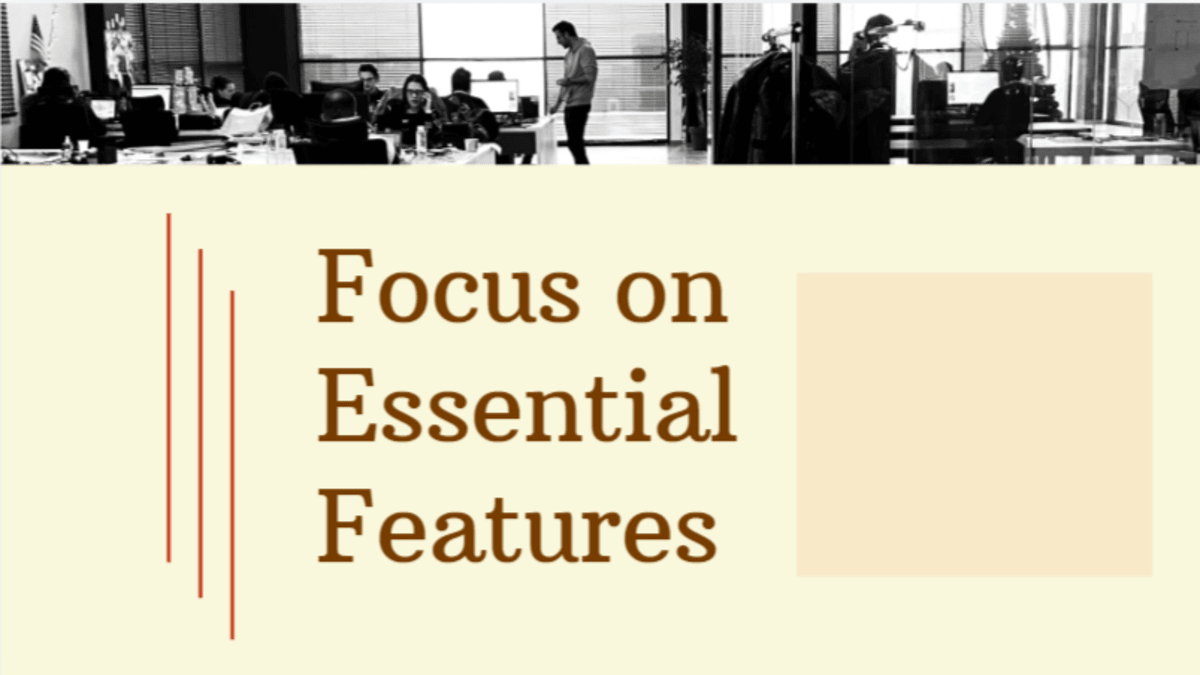
Finding the right employee engagement software can revolutionize your workplace. Here are some essential features to look for when making your choice:
1. Surveys and Feedback Tools:
Employee engagement largely depends on open communication. Look for software that offers customizable surveys and feedback forms. These tools enable you to gather valuable insights directly from your team, highlighting areas that need improvement.
2. Performance Management:
Effective employee engagement software should include performance management features. This allows you to set goals, track progress, and offer constructive feedback. Performance insights help employees understand their contributions and areas they can improve.
3. Recognition and Rewards:
Acknowledge and celebrate your employees’ achievements with a recognition and rewards system. Features like badges, shout-outs, and point-based rewards can significantly boost morale and motivation, fostering a culture of appreciation.
4. Learning and Development:
Invest in your employees’ growth with built-in learning and development modules. Access to courses, training materials, and skill-building activities empowers employees, making them feel valued and enhancing their job satisfaction.
5. Communication and Collaboration Tools:
Seamless communication is key. Look for features that facilitate easy and transparent discussions, such as chat functions, discussion boards, and video conferencing. These tools ensure everyone stays connected, even in remote setups.
6. Analytics and Reporting:
To understand what works and what doesn’t, you need robust analytics and reporting features. Detailed reports provide actionable insights into employee engagement levels, helping you pinpoint trends and measure the impact of your strategies.
7. Integration Capabilities:
Your employee engagement software should seamlessly integrate with other tools you use, like HR systems and project management platforms. Integration simplifies processes and ensures that everything works together smoothly.
Focusing on these essential features will help you choose a comprehensive employee engagement solution that not only meets your needs but also promotes a more satisfied and productive workforce.
Popular Use Cases in Various Organizations
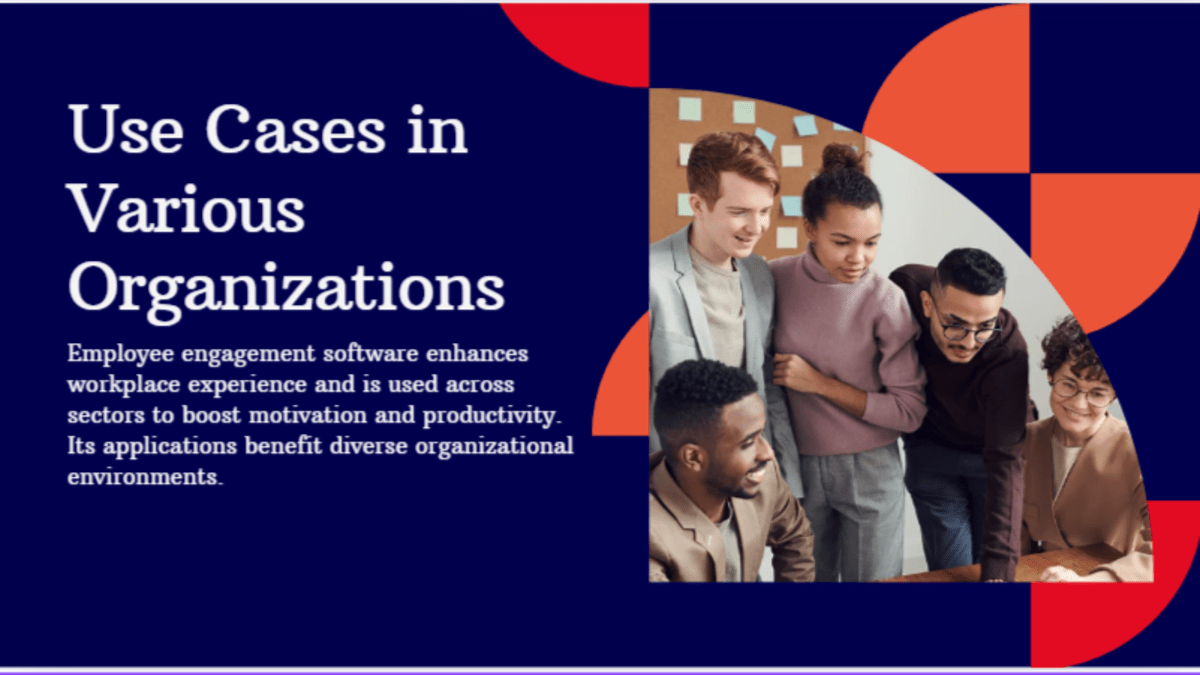
Employee engagement software can substantially elevate the workplace experience, and its applications span a diverse range of organizational environments. Many companies across different sectors leverage this technology in unique and impactful ways to cultivate a more motivated and productive workforce.
1. Real-time Feedback and Recognition:
Organizations use employee engagement software to facilitate real-time feedback and recognition. Managers and peers can promptly acknowledge achievements and provide constructive feedback, fostering a culture of appreciation and continuous improvement.
2. Employee Surveys and Pulse Checks:
Many businesses employ these tools to conduct regular employee satisfaction surveys and pulse checks. This allows them to gauge the general mood, identify pain points, and take proactive steps to address issues before they escalate.
3. Goal Setting and Performance Tracking:
Incorporating goal-setting features helps staff understand their individual and team objectives. Performance tracking modules enable managers to monitor progress, align goals with business strategies, and ensure everyone is contributing effectively to the company’s mission.
4. Training and Development:
Employee engagement platforms often include learning management systems (LMS) that provide training resources and development programs. This helps employees gain new skills, feel more competent in their roles, and can reduce turnover rates.
5. Social Collaboration Tools:
These platforms frequently include social collaboration features like chat functions and discussion forums. By facilitating better communication and collaboration, they can break down silos, enhance teamwork, and create a more cohesive organizational culture.
6. Employee Well-being Initiatives:
Some engagement tools also focus on employee well-being, offering resources for mental health, stress management, and work-life balance. This holistic approach ensures employees feel supported both professionally and personally.
By integrating these diverse functionalities, employee engagement software provides a cohesive framework to nurture a more satisfied, engaged, and efficient workforce in a variety of organizational settings.
Choosing the Right Employee Engagement Software for Your Business
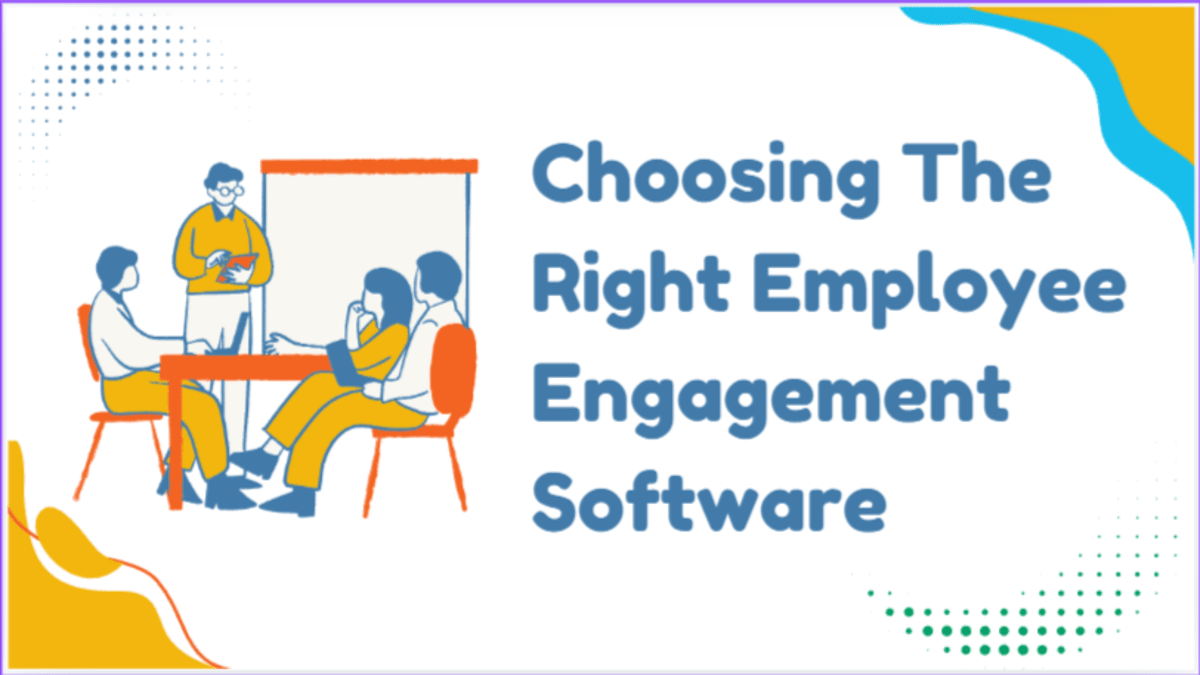
Selecting the best employee engagement software for your business can be a game-changer in cultivating a motivated and productive workforce. Here’s what to consider:
-
Understand Your Needs:
Before diving into options, clearly define what you need. Are you focusing on morale, feedback, performance tracking, or team communication? Knowing your priorities helps in narrowing down choices.
-
User-Friendly Interface:
A tool that’s difficult to navigate can hinder rather than help. Opt for software with an intuitive interface, making it easy for all employees to use without extensive training.
-
Customization Options:
Every organization is unique. Look for solutions that offer customization to tailor features to your specific needs. This can range from customizable dashboards to flexible survey options.
-
Integration Capability:
Ensure the software integrates seamlessly with your existing systems like HR platforms, project management tools, or communication apps. Integration reduces data silos and streamlines workflow.
-
Analytics and Reporting:
Data is key to understanding engagement levels. The software should offer robust analytics and reporting features, providing insights into employee sentiment and areas for improvement.
As your business grows, your software should grow with you. Choose a solution that can scale, accommodating more users and additional features without a hitch.
-
Support and Training:
Reliable customer support and training resources can make a huge difference. Good support ensures you can tackle any issues swiftly and make the most of the software.
Start with free trials or demos to get a feel of different options. Gather feedback from diverse teams to ensure the final choice caters to everyone’s needs. Choosing the right employee engagement software ultimately leads to a happier, more engaged, and productive workforce.
Conclusion: Enhancing Workplace Satisfaction and Productivity
In today’s competitive business landscape, fostering a motivated and satisfied workforce is crucial. Employee engagement software stands out as a valuable tool to achieve this goal. By facilitating better communication, recognizing achievements, and gathering insightful feedback, this software nurtures a positive work environment.
-
Real-Time Insights:
One of the key advantages of using employee engagement software is the real-time insights it provides. Managers can identify trends, address issues proactively, and make informed decisions to improve the workplace. This proactive approach can lead to increased job satisfaction, which is closely tied to higher productivity levels. Engaged employees are more likely to contribute actively, stay committed to their roles, and foster innovation within the company.
-
Continuous Improvement:
Moreover, employee engagement software promotes a culture of continuous improvement. Regular surveys and feedback loops ensure that employees feel heard and valued. This not only boosts morale but also helps in retaining talent, reducing turnover costs, and maintaining a stable workforce.
-
Choose the Right Software:
Choosing the right software tailored to your company’s unique needs is essential. Look for features such as user-friendly interfaces, integration capabilities with existing systems, and robust analytics. Implementing such a solution can streamline HR processes and free up time for strategic initiatives.
In conclusion, investing in employee engagement software is a strategic move for any business aiming to enhance workplace satisfaction and productivity. By creating a supportive and responsive work environment, companies can achieve higher performance levels and sustain long-term growth.
Related Articles:

